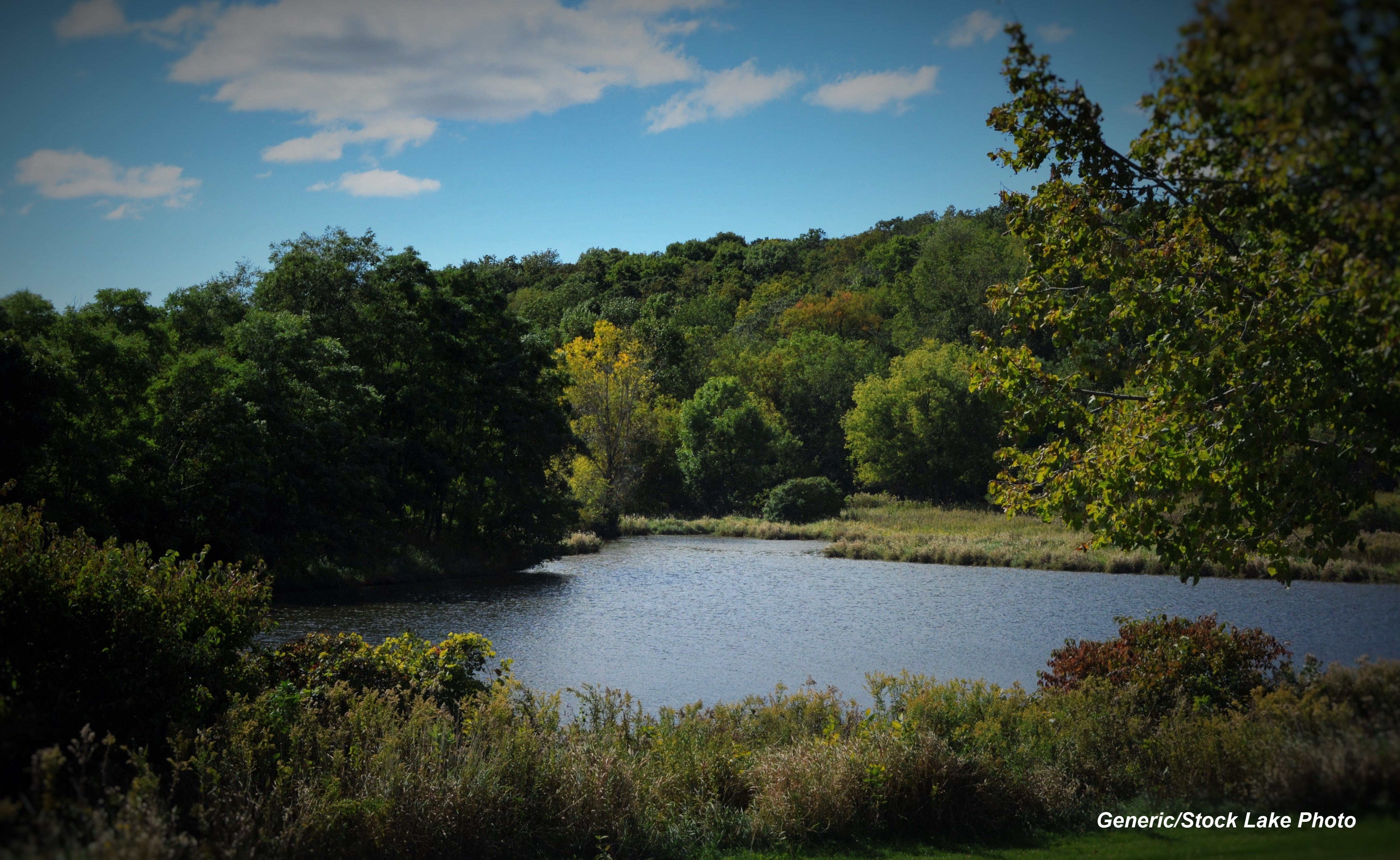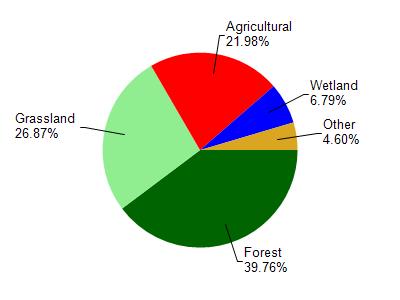
73.36 Acres
Shallow Seepage
2024
Poor
Excess Algal Growth, Degraded Aquatic Vegetation, Eutrophication
Total Phosphorus
Polk
No
No
Yes
Fish and Aquatic Life
Overview
McKeith Lake T36N, R18W, Sec. 31
Surface Acres = 72.0, S.D.F. = 2.85, Maximum Depth = 8 ft., M.P.A. = 39
A landlocked lake subject to partial winter freeze-over conditions.
Fish species present include northern pike, largemouth bass and pan fish.
It has no public frontage, access roads or private developments.
Muskrats are common. It is a nesting area for mallards and bluewing
teal. Other diving and puddle ducks use this lake during the spring and
fall migrations. A potential pollution problem exists where effluents
from the Cushing Cooperative Creamery run into a drainage ditch on
McKeith Lake's watershed.
Date
Author Aquatic Biologist
Impaired Waters
McKeith Lake was recently evaluated during the ten-year period of 2009 through 2018 for results that were reported to the USEPA for the 2020 Clean Water Act condition report. The waterbody is considered impaired, or in poor condition for designated uses which include the quality of fish and aquatic life, recreational use, and public health and welfare (fish consumption and related). Pollutants or problems encountered during sampling (impairments) are determined based on water quality standards outlined in Wisconsin 2020 Consolidated Assessment and Listing Methodology (WisCALM). Assessment results show water conditions that are potentially harmful for Recreation and Aquatic Life uses due to values for total phosphorus and chlorophyll that fall into the range expected for an aquatic community in poor health, therefore this water is listed as impaired.
Assessment results during the 2020 listing cycle show excess algal growth and eutrophication as a result of total phosphorus levels. Chlorophyll and total phosphorus data were assessed during the 2020 listing cycle. Both were too high for a healthy waterbody for recreation and aquatic life. Based on the most updated information, this water was proposed for the impaired waters list in 2020.
Date 2019
Author Ashley Beranek
Condition
Wisconsin has over 84,000 miles of streams, 15,000 lakes and milllions of acres of wetlands. Assessing the condition of this vast amount of water is challenging. The state's water monitoring program uses a media-based, cross-program approach to analyze water condition. An updated monitoring strategy (2015-2020) is now available. Compliance with Clean Water Act fishable, swimmable standards are located in the Executive Summary of Water Condition in 2018. See also the 'monitoring and projects' tab.
Reports
Management Goals
Wisconsin's Water Quality Standards provide qualitative and quantitative goals for waters that are protective of Fishable, Swimmable conditions [Learn more]. Waters that do not meet water quality standards are considered impaired and restoration actions are planned and carried out until the water is once again fishable and swimmable
Management goals can include creation or implementation of a Total Maximum Daily Load analysis, a Nine Key Element Plan, or other restoration work, education and outreach and more. If specific recommendations exist for this water, they will be displayed below online.
Monitoring
Monitoring the condition of a river, stream, or lake includes gathering physical, chemical, biological, and habitat data. Comprehensive studies often gather all these parameters in great detail, while lighter assessment events will involve sampling physical, chemical and biological data such as macroinvertebrates. Aquatic macroinvertebrates and fish communities integrate watershed or catchment condition, providing great insight into overall ecosystem health. Chemical and habitat parameters tell researchers more about human induced problems including contaminated runoff, point source dischargers, or habitat issues that foster or limit the potential of aquatic communities to thrive in a given area. Wisconsin's Water Monitoring Strategy was recenty updated.
Grants and Management Projects
| Project Name (Click for Details) | Year Started |
|---|
|
|
Monitoring Projects
| WBIC | Official Waterbody Name | Station ID | Station Name | Earliest Fieldwork Date | Latest Fieldwork Date | View Station | View Data |
|---|
| 2481500 | McKeith Lake | 10047725 | McKeith Lake - Center | 7/19/2017 | 8/27/2018 | Map | Data |
| 2481500 | McKeith Lake | 10020151 | McKeith Lake -- Access | 6/12/2019 | 8/5/2024 | Map | Data |
| 2481500 | McKeith Lake | 10004877 | McKeith Lake | 9/5/2000 | 6/20/2018 | Map | Data |
|

Watershed Characteristics
McKeith Lake is located in the Wolf Creek watershed which is 110.18 mi². Land use in the watershed is primarily forest (39.80%), grassland (26.90%) and a mix of agricultural (22%) and other uses (11.40%). This watershed has 84.95 stream miles, 1,439.91 lake acres and 4,111.04 wetland acres.
Nonpoint Source Characteristics
This watershed is ranked Not Ranked for runoff impacts on streams, Not Ranked for runoff impacts on lakes and Low for runoff impacts on groundwater and therefore has an overall rank of Low. This value can be used in ranking the watershed or individual waterbodies for grant funding under state and county programs.However, all waters are affected by diffuse pollutant sources regardless of initial water quality. Applications for specific runoff projects under state or county grant programs may be pursued. For more information, go to surface water program grants.
Mckeith Lake is considered a Shallow Seepage under the state's Natural Community Determinations.
Natural communities (stream and lake natural communities) represent model results and DNR staff valiation processes that confirm or update predicted conditions based on flow and temperature modeling from historic and current landscape features and related variables. Predicated flow and temperatures for waters are associated predicated fish assemblages (communities). Biologists evaluate the model results against current survey data to determine if the modeled results are corect and whether biological indicators show water quaity degradation. This analysis is a core component of the state's resource management framework. Wisconsin's Riverine Natural Communities.
Shallow seepage lake describes the depth and location of the lake in a watershed. These variables affect the lakes response to watershed variables.